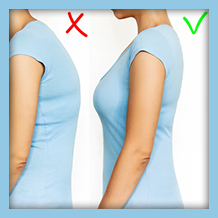

Kyphosis can be caused by many factors including aging, osteoporosis, and other diseases. Kyphosis can also be caused by an injury or accident. Treatment for kyphosis depends on your age and the cause and effects. Here’s everything you need to know.
Symptoms of Kyphosis
Kyphosis is not necessarily painful. Some people with mild kyphosis may not even notice it. However, if you have severe kyphosis, you might feel pain in your back. You may also have trouble sleeping at night because of the pain.
If you notice an increase in curvature in your upper back or your child’s spine, make an appointment with your doctor.
Common Causes of Kyphosis
Kyphosis occurs when the spine becomes more wedge-shaped. This causes the shoulders to slump forward and the chest to protrude. Kyphosis is often associated with osteoporosis, which weakens the bones. Vertebrae can be shaped by the following:
Fractures
A fracture is a break in the bones. A broken vertebrae can cause curvature of the spine, which can lead to pain. Compression fractures, also called mild compression fractures, are the most common type of fracture. These types of fractures usually don’t produce any noticeable signs or symptoms. However, if left untreated, they can become worse over time.
Osteoarthritis
A degenerative joint disease, osteoarthritis causes cartilage to wear away and bone to rub against bone. Symptoms include pain, stiffness, and swelling. Osteoarthritis affects the knees, hips, hands, feet, neck, and spine. It is most common in older adults.
Loss of Height in Spine
Kyphosis is caused by a loss of height in the spine. As the disk shrinks, the space between the vertebrae increases, causing the spine to curve forward and become less flexible
Scheuerns’ Disease
Also called Scheuermann’s kyphosis, it usually starts during the growth spurt before puberty.
Childhood Misalignment
Kyphosis can happen when the vertebrae become misaligned during childhood. It can also occur due to other medical conditions, such as EDS.
Diagnosis of Kyphosis
A doctor will usually ask you to stand up straight and then examine your height. They may also ask you to bend forward from the hips while looking at your back from the side. A doctor may also perform a neurological exam to check if you have any problems with your reflexes and muscle function.
Tests that may be performed include the following:
CT Scan
A CT scan or CAT scan is an imaging technique that produces cross-sectional images of the body. These images provide detailed information about the bones, muscles, organs, blood vessels, and other structures inside the body. CT scans are often used to diagnose disease, plan surgery, and monitor treatment.
MRI
MRIs are used to detect tumors or infections in your spine. They use radio waves and a strong magnet to create images of your body. These images show what parts of your body are healthy and what parts need medical attention.
Nerve Test
If you experience numbness or muscle weakness in your arms or legs, you may need a nerve test to see if there is damage to your nerves. Nerve tests are done by injecting an electric current through your skin and measuring the electrical activity of your muscles.
Treatment of Kyphosis
Kyphosis treatment varies depending on the cause and severity. Kyphosis treatment may include:
Pain Medications
Pain relieving drugs. Over-the-counter pain relievers are often not strong enough to relieve pain. Stronger pain relievers are available by prescription. These include NSAIDs (nonsteroidal anti-inflammatory drugs), opioids, muscle relaxants, anticonvulsants, antidepressants, and topical anesthetics.
Bracing
Scheuermann’s disease is a condition that causes the spine to curve forward. It is caused by an imbalance of bone growth in the spine. Bracing helps children with Scheuermann’s to keep their spine straight.
Surgery
Surgery may be required to fix this problem. The most common procedure to correct this is spinal fusion, where surgeons use metal rods and screws to fuse the vertebrae together in the correct position, thus preventing further curvature.
Schedule a Consultation With Kyphosis Experts Today
If you or your child have kyphosis, it is important to make an appointment with a doctor. If you have kyphosis due to an injury, the doctor may recommend treating it with rest and taking pain medications. If there is an underlying condition, such as osteoporosis or a fracture, your doctor will recommend further treatment.
To learn more about kyphosis, speak with a member of our team at Orthopedic & Laser Spine Surgery. You can schedule an appointment through our contact form or call our office at (855) 853-6542. We can answer any questions that you have about the condition and available treatment options.
